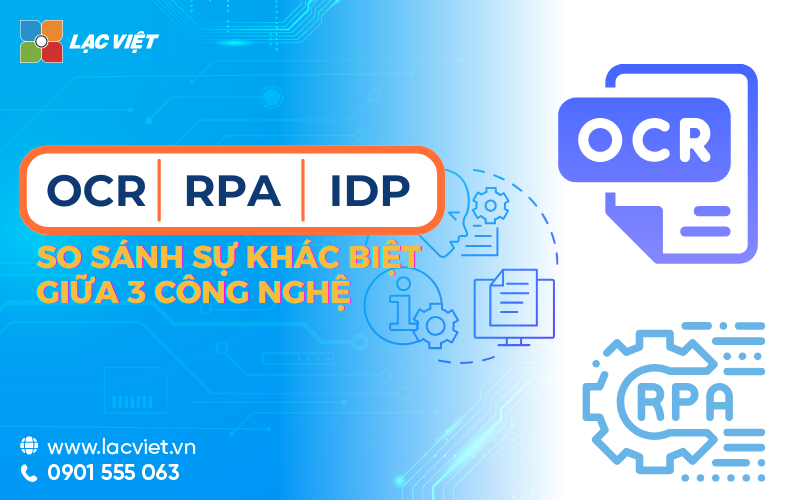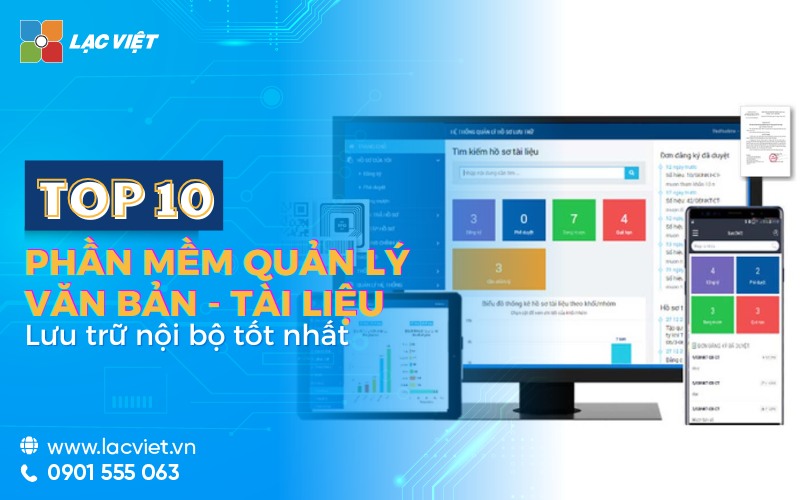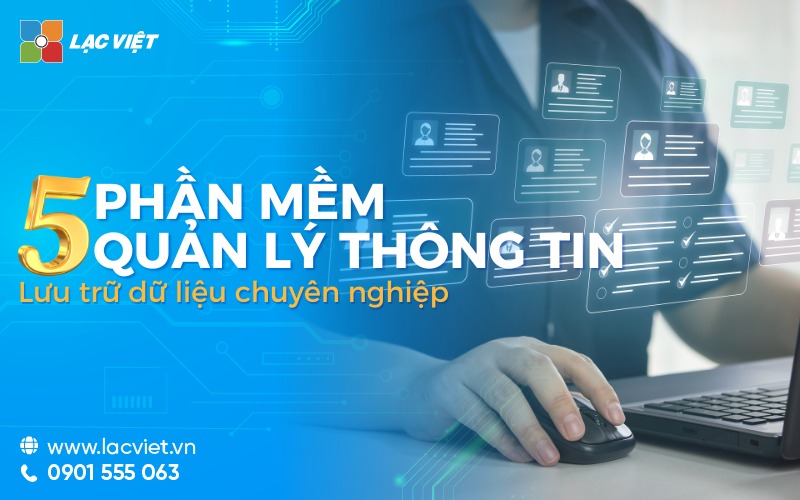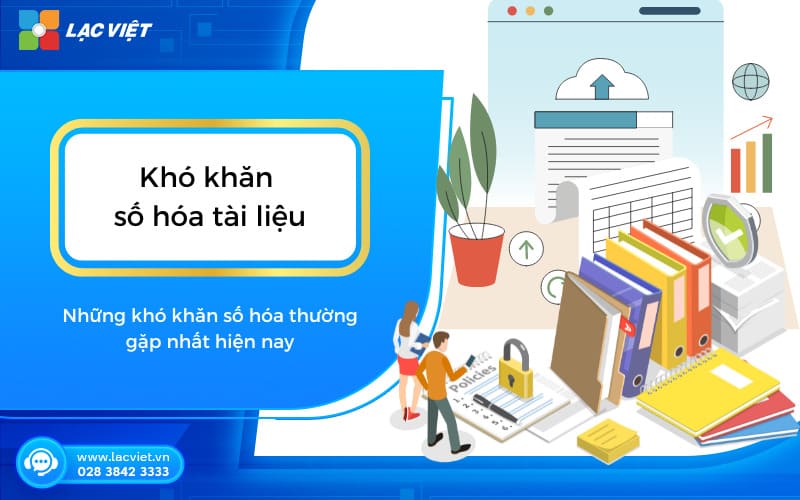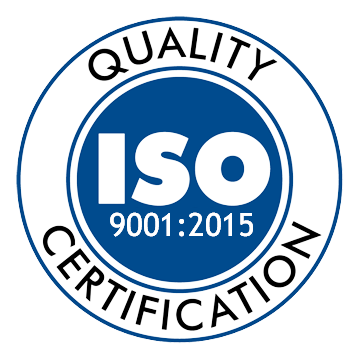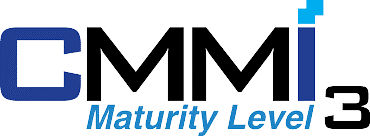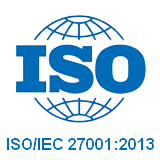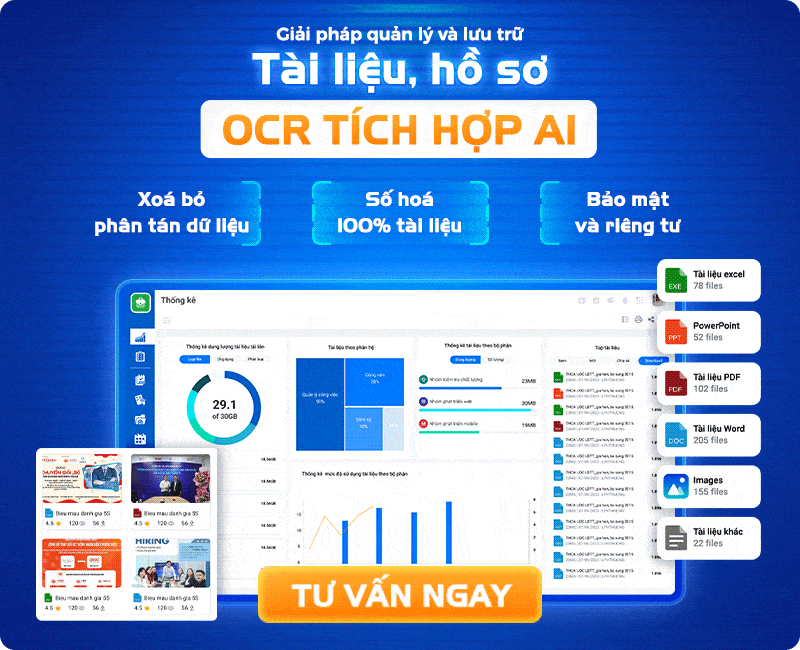To achieve optimum efficiency, the digitization does not stop at the conversion data of paper into digital data, but also need to the technology support processing and intelligent automation. Set of 3 technology OCR RPA IDP not only to help businesses optimize operational processes, but also opens up opportunities to improve the customer experience and enhance competitive advantage.
Let's Lac Viet Computing discover details about OCR, RPA and IDP, at the same time compare the difference between this technology
1. Trend of digitization in business
Document digitization is the first step and the most important in the conversion process of opening up opportunities for businesses to harness technologies such as data analytics, artificial intelligence (AI) and automation. This not only improves productivity but also build the foundation for enterprises to participate effectively in the digital age. According to a report by McKinsey, the business of culture success are likely to grow revenue faster 20%-25% compared with the business not deploy digitized.

However, the complexity of the transformation of the material from the form of traditional paper to digital requires tools and advanced technology. This is where solutions such as OCR, RPA and IDP become the focal point. These technologies do not merely support converting documents, but also re-shaping the entire process of data processing, help enterprises achieve efficiency and optimum accuracy.
The combination of the 3 OCR RPA IDP not only accelerate the process of digitization, but also create an ecosystem management, comprehensive documentation, enhance competitiveness for enterprises in the era of technology 4.0.
- OCR is what? Application technology OCR character recognition optical out of goods
- Deployment of digital documents using OCR technology from Lac Viet Computing
- Lac Viet provide services, document digitization OCR professional, comprehensive
- 7 software OCR character recognition optical best vietnamese 2024
2. Overview of OCR
2.1 OCR is what?
OCR (Optical Character Recognition) is detection technology, optical character used to convert content from paper documents, images or PDF into digital data that can edit, search and store.
OCR technology works based on the pattern recognition and the characteristic sharp lines in the text, from that analysis, to reconstruct the form of numerical data. This is an important first step in process automation material handling.
According to a report from Grand View Research, the market OCR is expected to reach an average growth rate annually (CAGR) is 13,7% from 2021 to 2030, thanks to increased demand from businesses in reducing manual processes

2.2 Manner of operation of OCR
OCR technology works according to the process 3 main steps:
Bưới 1: Scan documents
OCR document scanning input (paper, photo, or PDF), then convert them into digital images.
Step 2: pre-Processing, image
This stage improves the quality of images to increase the accuracy of character recognition. The processing steps typically include remove noise, smooth lines and alignment of text.
Step 3: Recognize characters
Based on AI algorithms, OCR recognition through two main methods:
- Matching Pattern (pattern matching): Compare picture with the templates have been predefined.
- Feature Extraction (Extract characteristics): Analysis of the basic strokes (horizontal, vertical, curved) to character recognition more accurate.
Step 4: convert and store
After the identification, the data is converted into text can be edited (such as Word, Excel) and stored on digitizing system.
2.3 the Role of OCR in the document digitization
OCR technology has become the “right hand” in the optimization process document management for business thanks to the following benefits:
- Increase processor speed: OCR can scan and handle thousands of pages of documents in minutes, compared with data entry craft need more hours. According to research conducted by AIIM (Association for Intelligent Information Management), the business apply OCR reduction is 50%-70% of the time data input
- Reduce errors: The automatic identification and data extraction minimize the risks of errors commonly encountered in the process of entering data manually, especially in the financial sector, legal, or medical.
- Improve document management: Data after digitization can search for quick, easy editing and integrated with the management system, other information. To help businesses enhance the ability to manage data and respond quickly needs to lookup information from customers.
3. Overview of RPA
3.1 RPA is what?
RPA (Robotic Process Automation) is a technology, process automation, document management using software or a “robot virtual” to perform the task repeated in the system. This is a tool to help replace the manual work in the tasks such as data processing, document management and integration of information from many different sources.
Follow Deloitte, RPA has become an integral part in the journey of corporate culture, with more than 53% of the global enterprise application of this technology in the year 2023 to increase performance and reduce operating costs.
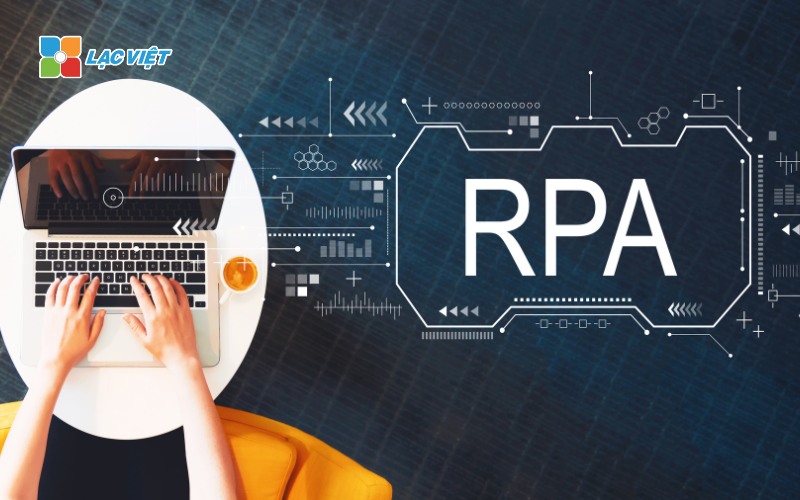
3.2 Manner of operation of RPA
Technology RPA works through 3 main steps below:
Step 1: collect data from the document input
Robot software to automatically collect and analyze data from documents, such as invoices, contracts or email. In conjunction with the OCR technology, which can convert paper documents into digital data.
Step 2: perform the process automatically
After data is collected, RPA perform operations such as data entry into the system, collate information and generate reports automatically. Minimize errors due to human and improved processing speed.
Step 3: connection and integration between the systems
RPA does not require changes to infrastructure, technology out there. Software can act as a link layer, the automation of processes that do not need to rewrite the code or re-structure system.
3.3 the role of RPA in the digitized material
- Automated material handling input: RPA helps businesses save time and effort in handling large volumes of material daily. Such processes input from the form can be done completely automatically, thereby freeing staff for the work more creative.
- Improve accuracy: Technology RPA remove flaws in processes such as invoice processing or tracking the contract, ensure the data is 100% accurate.
- Increase processing speed and reduce costs: Application RPA can help businesses save 20-30% operating costs within a year thanks to minimise resources and processing time
- Connection information quickly between the system:
One of the strong points of RPA is capable of seamless integration between the existing software. For example, it can automate the process of data transfer between the systems, CRM, ERP and document management, helping to optimize the flow of information.
4. Overview IDP
4.1 IDP is what?
IDP (Intelligent Document Processing) as processor technology, smart materials, using artificial intelligence (AI), machine learning (Machine Learning) and processing natural language (NLP) to extract, classify, data management, not the structure.
Compared with OCR and RPA traditional IDP not only extract data but also have the ability to understand context and analyze complex information, help businesses handle the documents like contracts, invoices and email in an efficient way. According to the report from Everest Group, the deployment IDP can increase the effective processing of documents up to 30-50% compared with the manual method
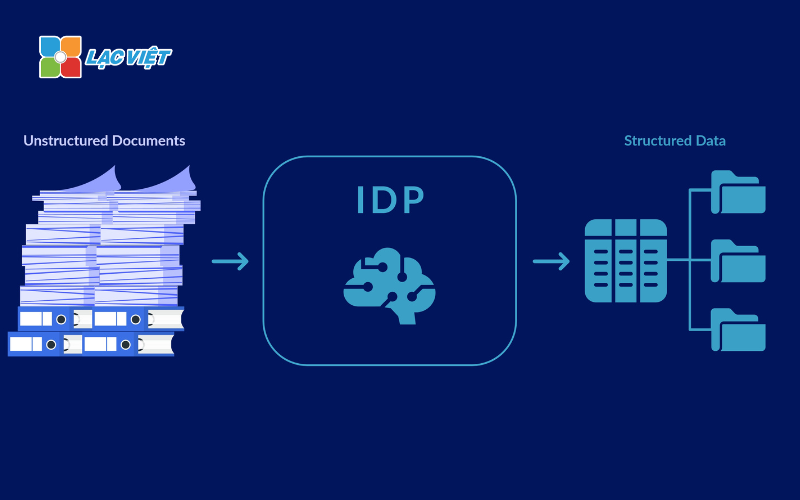
4.2 Manner of operation of the IDP
Technology IDP operates through three main stages:
Step 1: collect and enter the data
The material from various sources such as physics papers, email, or PDF, is entered into the system. Next, IDP uses OCR to convert physical documents into digital format.
Step 2: categorize and extract smart data
With the support of AI and NLP, IDP automatically identifies the type of document (such as invoices, contracts, forms) and extract specific information such as customer name, amount, date, including contract terms.
For example: A system IDP can automatically classify thousands of invoice by supplier and extract the required amount of payment from each invoice, minimize manual intervention.
Step 3: analysis and integration:
After processing, the data is integrated into the system, document management system (DMS) or ERP system to serve the next step in the business process.
4.3 the Role of the IDP in the digitized material
- Data processing't structure: Problem solving handle the documents are not structured or semi-structured, such as email, contract or freelance writing.
- Automation and reduce errors: Compared with process input crafts, IDP helps to lose up to 85% of data entry errors, thereby increasing the accuracy in the reporting and business processes.
- Increase work productivity: Handle material quickly and save up to 60% of the time compared to traditional methods.
- Enhance security and compliance: Meet the regulations on data security, such as GDPR, ISO 27001 through the automatic storage and document management in a transparent way.
5. Compare the difference between OCR RPA IDP
To compare the details and understand more about how the OCR technology, RPA and IDP impact to the process of digitizing documents, you need to consider criteria such as type of data, the ability to handle core technology, requires infrastructure and the level of accuracy. The difference this not only reflects the development in terms of technology but also to help businesses choose the right solution to specific needs.
Below is the detailed analysis to highlight the differences between the three OCR technology RPA IDP.
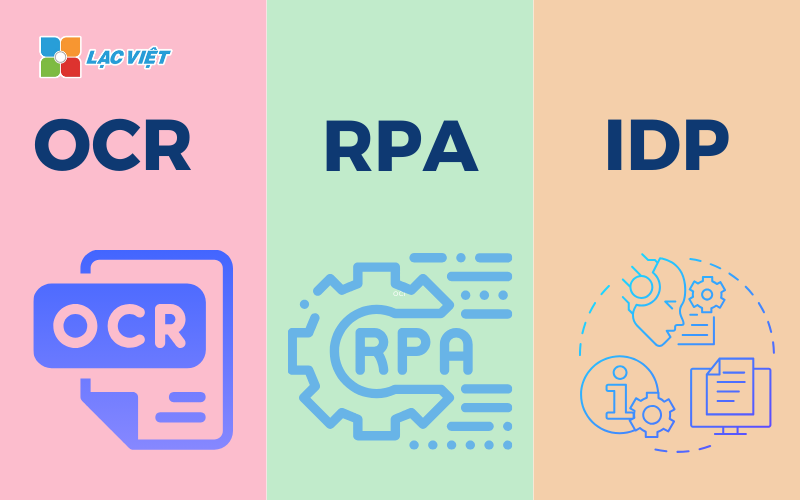
| Criteria | OCR | RPA | IDP |
| Types of data | Data is structured, simple and, according to form fixed. | Data according to the process and the task can be repeated. | Complex data, including unstructured and semi-structured data does not need to according to form. |
| Ability | Extract data. | Automate the process of data processing. | Analyze, classify, extract, and evaluate data. |
| Core technology | Combined software and hardware. | Integrated automated processes with software tools. | Technology, AI, machine learning combined with computer vision, NLP, deep learning. |
| Requires infrastructure deployment | Infrastructure complexity, requires hardware and software separately. | Easy to deploy, requires less resources, infrastructure and more. | Infrastructure cloud, requires platform AI and big data. |
| Accuracy | Less accurate than IDP. OCR may make errors in the process of text recognition. | Depends on process and automation level, cannot handle complex data. | Depends on process and automation level, cannot handle complex data. |
| Main tasks | Made in the recognition and extract data. | RPA perform the task automatically, but not enough ability to handle complex information. | IDP has the ability to understand data, context, and detailed information from the complex data, create the complete solution for business. |
6. Combine OCR RPA IDP brings benefits?
When is the integration of OCR technology RPA IDP in the process of digitization will bring many significant benefits for the business. Let's find out in detail these benefits:
6.1 accelerate the whole process of digitizing
When OCR, RPA and IDP working together can significantly accelerates the process of digitization of business.
Specifically, OCR helps convert paper documents into digitized text, RPA automation tasks, data processing, while IDP analysis and classification of complex information. When combining this technology, businesses can reach the speed of processing material faster from the scan, extract until analysis, helping save time and reduce the volume of manual work.
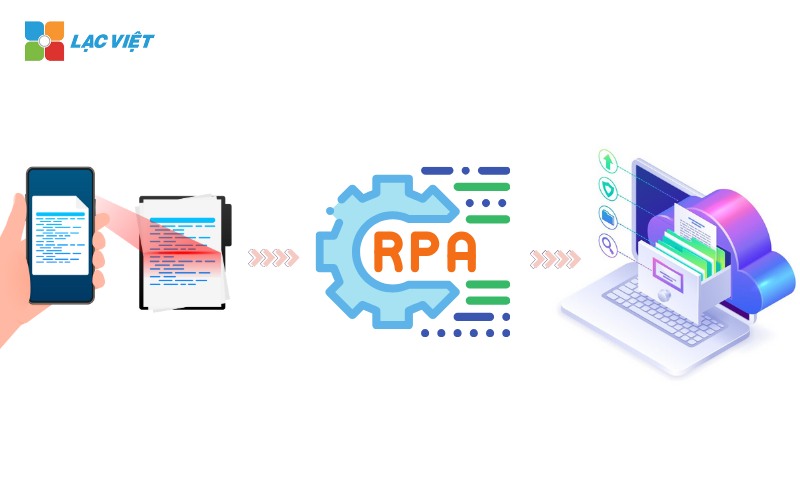
For example: A financial company uses OCR to scan invoices and vouchers, then use RPA to automatically enter information into the accounting system. Next, IDP analysis of the documents and classified information for the purpose of financial or report. This process quickly and accurately than with the public, helping the company save hours every day.
6.2 minimize errors thanks to complete automation
Although OCR can recognize text from the document, but the possibility of identification may be affected by the quality of the materials or the font is not clear. However, when combined with the IDP, the system can automatically learn and improve the ability to recognize over time. IDP using machine learning (machine learning) and AI algorithms to analyze complex document, which helps to minimize the errors when processing data.

For example: In the health sector, the digitization of medical records can be difficult if you only use OCR, because these data can have many formats and different fonts. However, when applying the IDP system, not only the text but also understand the context and content material helps to increase accuracy, reduce errors significantly.
6.3 Process information more quickly and accurately
With the combination of three OCR technology RPA IDP, businesses can process information quickly and much more accurately than making crafts.
OCR helps get interface and data conversion from paper to digital format, while IDP can analyze and extract information from complex documents, such as contracts, invoices, inquiries, help bring highly accurate results. RPA will automate the process based on this data, from which reduce the burden for staff and increasing work efficiency.
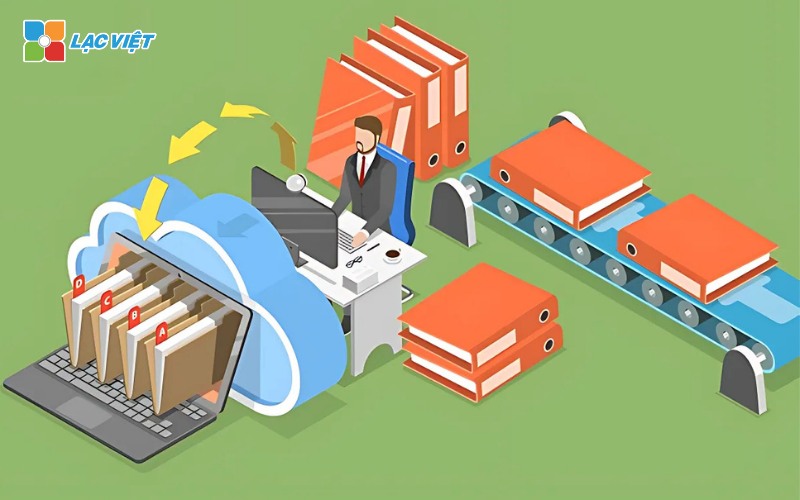
For example: In the banking sector, the processing of loan applications can take a lot of time if done manually. However, when using OCR to scan the information from the form, IDP to analyze the loan conditions and RPA to automate the process of review and enter data into the system, the whole process will become fast, accurate and more efficient.
7. Vietnam – Solution digitized comprehensive documentation for business
Lac Viet is proud to bring services to digitize documents for business optimization through recognition technology, optical character (OCR) modern help convert your paper documents or scan them into digital data easily, quickly and accurately. Don't just stop at the text recognition, OCR technology of Vietnam also has the ability to recognize the information from the document does not have structure, such as invoices, contracts and reports. This helps businesses to save significant time and cost in document management, while improving the ability to research and use the information when needed.
Services, document digitization of Vietnam are also integrated features auto-translation to more than 87 languagesallows global enterprises to easily manage and handle the international document without worrying about errors in the translation process. In particular, with the support of models, advanced machine learning (LLM), translation will ensure keep the context and meaning of the original text.
One of the highlights in the service of culture of Vietnam is the ability to integrate chatbot AI intelligence into the system. With chatbot, businesses can quickly query and find information from the internal documents, improve working efficiency and save time. System q automatic intelligent is helps optimize the access and use of data, bringing the user experience smooth and efficient.
According to the survey 2023 by IDC, more 95% the business world has started to convert numbers with different steps from learn, study, to start the deployment and implementation. Is step premise of the transition of document digitization – the opportunity to move his business in Vietnam when the state put in place policies to support businesses during the digitized. Lac Viet – the first successful deployment service digitization OCR built-in AI for business SEE THE DETAILED FEATURES OF THE NUMERICAL SOLUTION HERE. CONTACT INFORMATION:
The application OCR RPA IDP will help businesses automate processes, optimize costs, and improve customer experience, open new opportunities in the management and processing of data. Vietnam with 30+ years experience and expertise in the field of digital technology, providing solutions digitized comprehensive document from text recognition, automatic translation, to the support system smart AI with the business in the digitization process.
CONTACT INFORMATION:
- Lac Viet Computing Corporation
- Hotline: 0901 555 063 | (+84.28) 3842 3333
- Email: info@lacviet.vn – Website: https://lacviet.vn
- Headquarters: 23 Nguyen Thi Huynh, P. 8, Q. Phu Nhuan, Ho Chi Minh city

